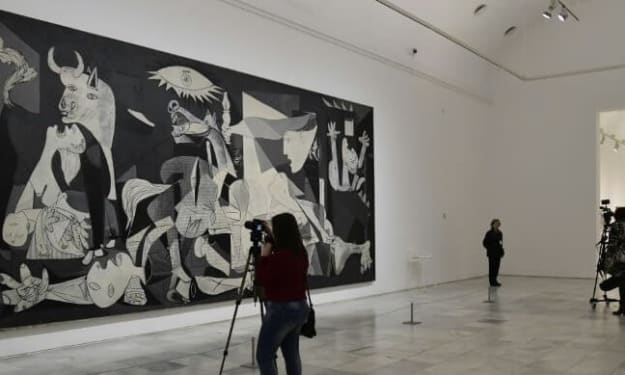Tick Tock
Temperance bearing an hourglass

On the difficulty of retaining time with the human beings of the past.
The gradual drag of time – while we’re caught on preserve at a call center or sitting thru some other interminable online assembly – may experience like a characteristic of contemporary lifestyles, however, it changed into familiar to Geoffrey Chaucer. His tragic hero Troilus, compelled to attend ten days to be reunited together with his like Criseyde, feels his global decelerating: ‘the days Moore and lenger each night’. Yet if we’re tempted to count on that for Chaucer and different medieval people time turned into honestly much less medical than for us, we want handiest remind ourselves that this ‘Father of English Literature’ also wrote a guide for the most famous timekeeping tool of the center a long time: the astrolabe. Addressed to his ten-year-old son Lewis, the treatise, entitled Bread and Milk for Kids in early manuscript copies, signaled Chaucer’s preference to bring the proper technology of the time to as huge an audience as feasible.
Such contrasting conceptions of time are evocatively and accessibly distinct on these new paintings by using two eminent Chaucer scholars, posted as part of Reaktion’s Medieval Lives collection. Throughout a succinct 214 pages, Gillian Adler and Paul Strohm convey the complexity and class with which medieval human beings took into consideration the passing – or cycling, or climaxing – days. Within the 1960s the French historian Jacques Le Goff drew attention to the multiplicity of medieval timeframes, juxtaposing ‘merchant’s time’ with ‘church time’; Alle Thyng Hath Tyme joins other recent works – maximum appreciably Matthew Champion’s The Fullness of Time (2017) – in adding nuance to this picture, showing how writers and artists could concurrently preserve and speak numerous extraordinary, dissonant temporalities.
Adler and Strohm take the broadest viable view of time. Perhaps the most charming chapters of the book, wherein they make surprisingly effective use of its remarkable full-color illustrations, are those handling subjects such as the long time of mankind, the wheel of fortune, and dying. ‘in the midst of existence we're in death’, went the famous medieval antiphon; with examples such as Boethius and Boccaccio, Dante and The Dance of loss of life, the authors evocatively hyperlink the arbitrary whims of woman Fortune, the foreboding Father Time, a while of man from innocence to senility and the cavorting skeletons of the danse macabre. A mainly interesting segment covers the ages of ladies, which attracts literary and real-lifestyles examples of maidens and moms, wives and widows, to expose how girls lived inside – and every so often rejected – a gendered timeline. Such rejection additionally seems in advance within the ebook, when Adler and Strohm describe the ‘freewheeling temporalities’ of Julian of Norwich. Her dizzying visions deliver this Norwich anchoress from the precise month of May additionally 1373 to the time of Christ, from exactly measured moments to the span of eternity.
Julian's information is the start of her first imaginative and prescient ‘early on the morn’. But rather than giving the time on the subject of sunrise, or declaring that it came among, say, the liturgical places of work of Lauds or prime, she states that it started out ‘approximately the how of fowr’. This seems to be a reference to the clock time that spread across the towns of Europe in the 14th century, and which could have been audible to Julian from the clockwork-driven chimes of bells inside the tower of Norwich cathedral, half a mile from her cellular. The rise of the mechanical clock is possibly the best technological trade of the center in a while, but it provides demanding situations for historians. In the first location, early clocks have been regularly changed and upgraded, with metal elements melted down and recycled, so little fabric evidence survives. The documentary proof may be problematic too, now not least because the Latin word for clock, Horologium, become extensively utilized for quite distinct timekeeping gadgets, together with sundials and clepsydra (water clocks). But the improvement and spread of the mechanical clock, and its use along with other timekeeping technologies, is a captivating and essential story that merits consideration. Why, for instance, did astrolabes keep growing in recognition for 250 years after the invention of the mechanical clock?
Adler and Strohm do now not deal with such historic problems. Because their relevant argument is that ‘storytelling and narration require a commitment to time’s unfolding [and hence] the greatest medieval narratives are inseparable from their theories of time’, their awareness is of those top-notch works of literature; the characteristic of time in the medieval imagination looms larger than its sensible region in humans’ lives. At the same time as the authors commit a section to the ‘revolution’ of mechanical clock-making, it jumps backward and forwards chronologically, making it intricate for readers to get a feel of the tool’s improvement; they no longer delve into the info of the ‘unequal’ seasonal hours or the current astronomical calendars. Realistic medieval uses of time receive rather brisk treatment: we no longer come upon ordinary structures just like the ‘fish time’ – the complex intersection of non-secular fasting with hygiene policies that affected which seize may be bought while from which stalls – that Champion identified in the marketplace of 15th-century Leuven. Nor will we come upon how medieval human beings robotically measured time by distance – and vice versa – as mentioned in Robert Bartlett’s The Hanged Guy (2004). And the visually stunning genealogical regular histories (highlighted in recent paintings by Laura Cleaver and others) would possibly have merited inclusion in the charming phase on ‘international-Time’.
However possibly to go away the reader wanting more is exactly the factor of those narrow Reaktion volumes. This one, fantastically produced – whose first-rate index extra than compensates for the cheap-feeling vivid paper – clearly has lots to excite any readers or students looking for a brand new attitude on the canon of medieval literature.





Comments
There are no comments for this story
Be the first to respond and start the conversation.